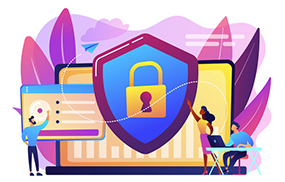
The Fastly changing technology and portability of mobile devices have forced people to heavily believe those products.
The Fastly changing technology and portability of mobile devices have forced people to heavily believe those products. With their increased functionalities, mobile devices perform variety of our day-to-day activities, like surfing the online, booking appointments, fixing reminders, sharing files, instant messaging, video calling, and even mobile banking.
Given of these functionalities, mobile devices are vulnerable to online threats and also are susceptible to physical attacks thanks to their portability. A number of the safety threats include malware specifically designed for mobile devices i.e. worms and spyware, unauthorized access, phishing, and theft. Securing a mobile devices requires a different approach, unified and multilayered. For optimum security, you would like to seek out the approach that most closely fits your network.
How to protect against mobile threats:
Installation of Antivirus
The files you download and therefore the apps you put in on your mobile device could be full of malicious code. If launched or run this code or file could send your data to hackers, thereby making you unsecured you of your privacy. To avoid that, installing an antivirus application will guarantee your security.
Antivirus applications helps to, like erasing your malicious data if you lose your mobile device, blocking and tracking unknown callers who might be a threat, and telling you which of them applications aren't safe.
Update your Software:
Your mobile device firmware may additionally be susceptible to security threats. New loopholes could be exploited leaving your device hospitable threats, to avoid that, always update your firmware/device. Android and iOS, roll out new updates from time to time. Most of these updates act as a security patch to known vulnerabilities on your device. You would possibly found out updates to be manual or automatic.
Used Strong Password:
Strong passwords including biometric features, like fingerprint authenticators, make unauthorized access nearly impossible. Always passwords should be eight characters long and contain alphanumeric characters. Try to use two-factor authentication.
Avoid Using of Public WIFI:
Most of the free Wi-Fi are not encrypted. These open networks Wi-Fi allow malicious people to eavesdrop on the network traffic and easily get your passwords, usernames and sensitive information.
Copyright @SecurWires. Designed & Developer By MindScript